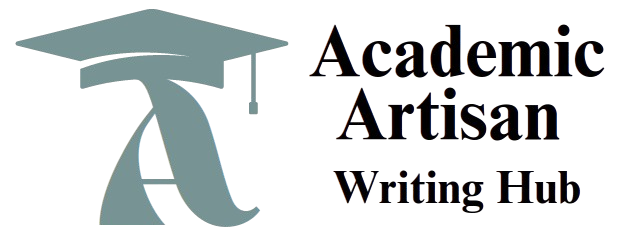WhatsApp Number: +1(249) 265-0080
Conservative Criminology and White-Collar Crime
How were theories of white-collar crime developed?
How did the social context of the 1980s and early 1990s give rise to conservative criminological ideals? How is the current context influencing conservative criminology today?
Check our essay writing services here
Conservative Criminology and White-Collar Crime
The development of white-collar crime theories can be traced back to the work of sociologist Edwin Sutherland, who first coined the term “white-collar crime” in 1939. Sutherland’s theory challenged the prevailing belief that crime was primarily associated with lower-class individuals or those from disadvantaged backgrounds. Instead, he argued that crime could also be committed by individuals in higher social strata, such as business executives, politicians, and professionals, who typically operated within legal frameworks but engaged in illegal or unethical activities for financial gain.
Sutherland’s differential association theory proposed that criminal behavior is learned through interactions with others, suggesting that individuals may learn to commit white-collar crimes from colleagues or peers in their professional environments. His work highlighted the importance of understanding the social context in which these crimes occur—particularly how corporate or institutional cultures can normalize or even encourage deviant behavior.
Subsequent scholars expanded on Sutherland’s foundational work, considering factors such as organizational culture, regulatory failures, and the intersection of law and business ethics. The development of strain theory (Merton), control theory (Hirschi), and routine activities theory (Cohen and Felson) also contributed to the understanding of white-collar crime, offering insights into the pressures, opportunity structures, and lack of deterrence that enable such crimes. Theories of white-collar crime were further advanced by examining the complexities of corporate fraud, embezzlement, insider trading, and financial misrepresentation.
Social Context of the 1980s and Early 1990s and Conservative Criminological Ideals
The social context of the 1980s and early 1990s had a significant influence on the rise of conservative criminological ideals. During this time, there was a shift in societal attitudes toward crime and punishment, particularly in the United States and other Western nations. This period was marked by increasing concerns about crime rates, the rise of drug-related offenses, and the growth of fears around perceived moral decay. The backlash against the perceived leniency of the 1960s and 1970s, when rehabilitation and treatment-focused criminal justice policies dominated, spurred the adoption of more punitive and deterrence-based approaches.
The 1980s saw the emergence of “tough-on-crime” policies under leaders like U.S. President Ronald Reagan and U.K. Prime Minister Margaret Thatcher. These policies emphasized stricter law enforcement, the expansion of the prison system, and a greater focus on individual responsibility and accountability. This conservative shift in criminology rejected the previous focus on rehabilitating offenders and instead called for policies that prioritized punishment, deterrence, and “law and order.”
The conservative approach to criminology in the 1980s and early 1990s was also influenced by the growing economic inequalities and the increasing prominence of neo-liberalism, which emphasized free-market capitalism and individualistic approaches to social issues. There was an increasing emphasis on personal responsibility and a growing reluctance to address structural social factors, such as poverty, in discussions of crime.
Conservative Criminology and White-Collar Crime Current: Context Influencing Conservative Criminology Today
The current social and political context continues to influence conservative criminology, though the issues at the forefront have shifted somewhat. Contemporary conservative criminology remains heavily focused on law and order approaches, but there are several notable influences:
-
Economic Inequality: While the 1980s and 1990s focused primarily on drug-related crime and rising street crime, today there is increasing attention to the intersection of crime and economic inequality, particularly in the context of white-collar crime and corporate criminality. In the aftermath of the 2008 financial crisis, there has been a growing awareness of the role that powerful institutions and individuals play in economic malfeasance, but conservative criminological frameworks are often slow to respond to these issues compared to street crime.
-
Populist and Political Movements: The rise of populist political movements, particularly in the U.S. and Europe, has led to an increased emphasis on border security, terrorism, and national crime concerns, which align with more conservative ideologies. The contemporary focus has been on terrorism, immigration, and security threats, with a continued reliance on punitive measures, rather than rehabilitative or restorative justice approaches.
-
Technology and Cybercrime: As society has become more digitized, cybercrime has gained prominence. The conservative criminological approach often advocates for tougher laws around cybersecurity and digital crime, yet these approaches sometimes prioritize deterrence over the structural causes of cybercrime, such as the growing power of tech companies and the exploitation of data.
-
Mass Incarceration: Conservative criminology today continues to support punitive measures, with mass incarceration being a key element of the system. This reflects a continuation of the “tough-on-crime” stance of the 1980s, though there is growing critique of its efficacy, particularly in light of concerns over racial disparities and the long-term costs of incarceration.
Conclusion
The development of theories surrounding white-collar crime emerged from a challenge to traditional notions of criminality, especially those focused solely on street-level offenses. Sutherland’s contributions to criminological theory were groundbreaking in shifting the focus to the crimes committed by more privileged individuals. Meanwhile, the 1980s and early 1990s brought about a marked shift in criminological thought, with conservative criminology focusing on punitive measures and “law and order” policies. This shift was shaped by societal concerns about rising crime, economic instability, and a desire for stronger enforcement mechanisms. Today, conservative criminology continues to influence contemporary policy and discourse, particularly in the realms of cybercrime, national security, and the criminal justice system, with some attention being paid to issues of economic crime and systemic inequality. However, the challenges of addressing these complex, evolving forms of crime require a broader, more nuanced approach.


